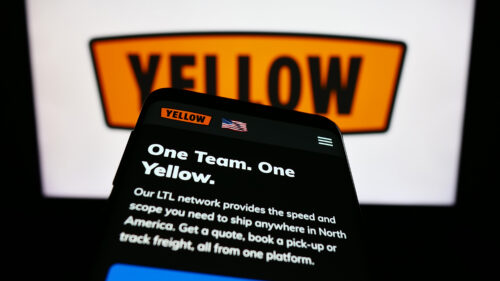Yellow Bankruptcy Puts Management and Labor Under Pressure

When 99-year old trucking company Yellow Corporation shut down, with the Teamsters Union planning to file for bankruptcy, we gained some insight into labor and management navigating an economic crucible not of their making. It’s true the players in this sad episode shoulder direct responsibility, but the backdrop of inflation impacted both labor and management and they did not build that.
For Yellow Corp. management, the cost of equipment, parts, fuel, compliance and—most of all—money for operating expenses increased rapidly. On the other side, unions and other Yellow employees directly experience the same stresses on their families. Who can blame them for needing more?

Both operated in a macro environment, with quality of life and business operating pressures created by others far above them. The resolution was a wreckage that served neither side. It suggests that rather than reacting by attacking, a cooperative approach may have been more beneficial to bridge the gap between today’s government policies and more levelheaded ones in our future.
But what if our economy and increased costs are the new normal? Then all the more reason for management and workers to find a smarter way to respond to outside pressures.
Technological changes also impact management and labor. Enterprise managers react to scarcity of skilled labor and rising costs with automation. Investing in manufacturing and distribution robots, and applying AI to the supply chain, may not be the right answer for everyone, but those trends are unstoppable. What impact do those developments have on labor? Not too much now but certainly more later, and soon.
Another development that will impact global supply chains, inventory levels, and how—or even whether—product gets delivered and the workers that deliver them is additive manufacturing, commonly known as 3D printing.
Global manufacturer Daimler is testing 3D parts that, when fully implemented, will drastically reduce shipment levels for spare parts. Early results should make players in all parts of the supply chain take notice.
“From our portfolio of about 320,000 spare parts, we identified 40,000 as feasible for 3D printing,” explained Matthias Schmid, CDO of the Center of Competence for Additive Manufacturing, Daimler Truck, at a recent industry event. “Currently, we have more than 1,500 parts available in our digital warehouse.”
3D parts are made available to production lines and Daimler’s customers, facilitating demand-driven production and fulfillment with zero inventory.
Warehousing? Transportation? It’s coming, maybe not for everyone, and maybe not soon. But the Yellow bankruptcy offers a lesson that working together is a better way to face the future.
